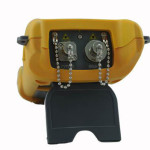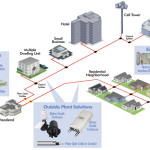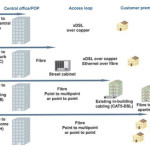- Optical link budgets – Vary by ODN class and PON type. However, 29 dB is often used as a “loose” loss budget for both XGS-PON and NG-PON2 for Class N1/N2 applications. This reasonably healthy link budget can be adversely affected by bending losses at NG- PON downstream lambdas.
- Spectral losses – XGS-PON (1270 nm) upstream signal will have a much higher loss due to fiber attenuation compared to other PON services, especially older fibers that are not optimized for full-spectrum operation.
- Existing GPON splitters – Need to have a wide operating wavelength range (1260 nm to 1650 nm0 splitters (U-Grade) to not affect NG-PON wavelengths and cause additional insertion loss.
- Co-existence elements – Additional loss needs to be considered in the overall link budget.
As a rule of thumb, factor ± 0.8-dB loss for GPON, ± 1.4-dB for XGS-PON, and ± 1.1-dB loss for NG-PON2 TWDM (excludes WM1 mux). - Test equipment
› Optical light source (OLS) and optical power meter (OPM) – Good for verifying insertion loss at the PON operating wavelengths. A specialized NG-PON OLS can be connected at the co-existence (CEx) filter, and an OPM calibrated at the specific PON wavelengths is used to verify the total insertion loss.
› OTDR – Ideal for detecting and locating bends in a xPON fiber. Historically, 1310- nm and 1550-nm wavelengths have been used to detect bending in GPON and other applications. However, 1625-nm or 1650-nm wavelengths are often used to check “worst case” scenario for NG-PON2 (TWDM and P-to-P) downstream signals operating in the L-band; this also holds true for DWDM L-Band systems that might be used in the xPON backhaul segment. A CWDM OTDR is useful to simulate and characterize attenuation in PON systems since several wavelengths per the ITU-T G.694.2 CWDM grid are very close to the PON operating wavelengths. For new co-existence PON systems, the following ODN parameters can be re-verified using a purpose-built OTDR:
– Total insertion loss of the link
– Total optical return loss of the link
– Loss of discrete events (splice, connector)
– Reflectance of any discrete event (splice, connector)
– Potential micro and macro bends.
Source from Lightwaveonline: Can Your ODN Handle NG-PON?








